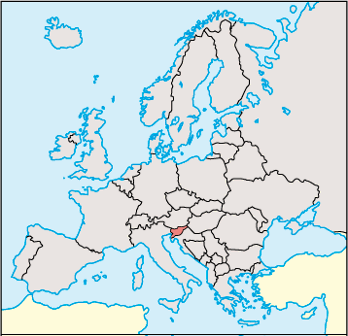What is the Capital of Slovenia? Ljubljana

Ljubljana is the capital of Slovenia. The city, located on both sides of Savas bielv Ljubljanica, has 292,988 residents (2019). Ljubljana is the country’s administrative, economic and cultural center.
Business and transport
Important business enterprises are the petrol chemical industry, the mechanical, paper, porcelain, textile and leather industries, as well as the pharmaceutical industry. The city is the center of the country’s railway network, which is well developed. 26 kilometers northwest of the city is Ljubljana International Airport.
Culture and education
Ljubljana Castle was originally built in the 11th century. The National Museum was opened in 1821. In the city there are several other museums, including the Museum of Modern Art, an Ethnographic Museum and a Technical Museum, as well as a Railway and Architectural Museum. The National Gallery was established in 1918. The Opera House was built in 1892, but restored in 2011. It houses the country’s opera and ballet. In the city there are many libraries and theaters. Ljubljana is a Roman Catholic archbishopric in Slovenia. The cathedral, which was built in the early 1700s, is decorated with, among other things, Baroque frescoes.
The University of Ljubljana, dating from 1595, was restored in 1809 and 1919. The university has 38,000 students (2020). In the capital there are colleges for theater, film, music and the arts industry.
Resorts
From the 13th century until 1918 Ljubljana was part of the Habsburg monarchy, and the old town, with its beautiful Baroque houses, is characterized by Austrian times. The Italian influence is also noticeable. Here you will find the old town hall (Rotovž) with a cemetery from 1484 and the cathedral. Between the old town and the new town center is Tromostovje, ‘The Three Bridges’, a street bridge and two pedestrian bridges.
History
The city dates back to Roman Emona, but was destroyed in the 400s. It re-emerged as the Slavic Luvigana, and came under the Habsburgs in 1278 as part of the Krain land county. The city was taken by French troops in 1809 and became the capital of the Illyrian provinces in 1813. After 1848 (the February Revolution) Ljubljana became the political and cultural center of the Slovenian nationalist movement. The city became part of the Kingdom of Yugoslavia in 1918, and after World War II the capital of Slovenia, which was then part of the Socialist Federative Republic of Yugoslavia. In 1992, Ljubljana became the capital of independent Slovenia.














































